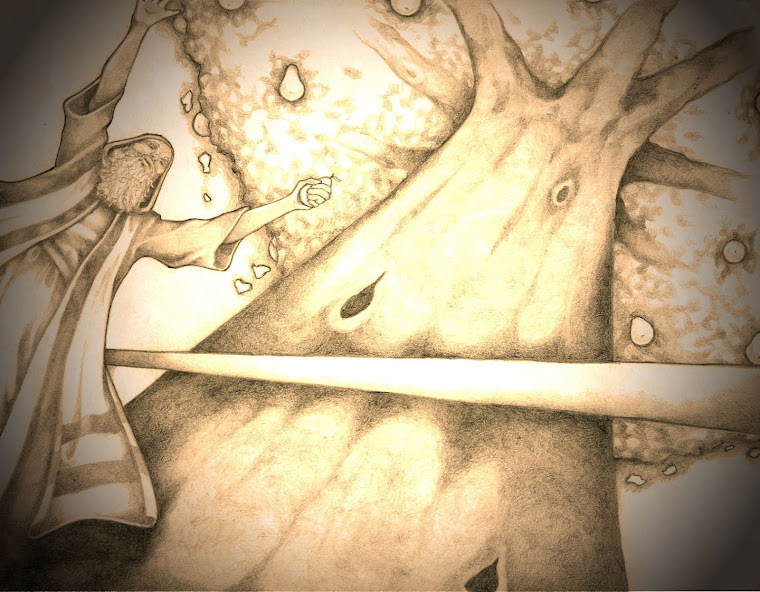This blog is designed to share research and evidences that I find interesting or informative in regards to the Book of Mormon, Bible, and other standard works. I usually focus on the ceremonial ties between the Israelites the Hopi and those found in Mesoamerica or the possible lands of the Book of Mormon.
In The Cavity of a Rock

Father Lehi
Saturday, December 29, 2012
Tuesday, December 25, 2012
Egyptian Wordplay in the Book of Mormon
Many people are familiar with Hebraisms in the Book of Mormon, Bible and other texts(including Mayan codex and Hopi ceremonial dress). These would include such examples as chiasmus which is a figure of speech in which in which two or more clauses are given and then repeated in reverse order. Another Hebraism is called polysyndeton which is the use of several conjunctions in close succession. This was used in 3 Nephi 4:7 "and they were girded about after the manner of their loins and they were dyed in blood, and their heads were shorn, and they had headplates". These are just a few examples of Hebraisms. The Book of Mormon as a record we are told was written in reformed Egyptian which consisted of a mix of both Egyptian and Hebrew. With the above examples of Hebrew in the Book of Mormon I have often wondered if there were any "Egyptianisms" in the Book of Mormon?
I read an article a few years ago that spoke of one Egyptianism that takes place in 1 Nephi 15:23-24 (part of verse 24). Unfortunately I do not recall the author or the title of the article only that it impressed me enough that I took the time to write it in the margin in my scriptures next to 1 Nephi 15:23-24 which states:
"And they said unto me: What meaneth the rod of iron which our father saw, that led to the tree?
And I said unto them that it was the word of God: and whoso would hearken unto the word of God, and would hold fast unto it, they would never perish;"
In Egyptian "mdwr ntr" is "Gods words" and is translated into English as hieroglyphics. In Egyptian "mdw" is also "staff" or "rod". This is an Egyptianism word play on word meanings. Thus in Egyptian word meanings and word play "word of God" and "rod" or "staff" are directly correlated. This would seem to have been something either done by Nephi in writing portions of the Book of Mormon or by the Lord himself in helping Nephi understand his fathers vision in which he saw the Tree of Life with the rod of iron which represented the word of God. Either way it would have been something that Joseph Smith wouldn't have known when he translated the Book of Mormon in the early to mid 1800's and points once again to the authenticity of the Book of Mormon. If anyone can recall the article or founder of this Egyptianism or any others please feel free to comment and inform me so I can give credit where credit is due.
I read an article a few years ago that spoke of one Egyptianism that takes place in 1 Nephi 15:23-24 (part of verse 24). Unfortunately I do not recall the author or the title of the article only that it impressed me enough that I took the time to write it in the margin in my scriptures next to 1 Nephi 15:23-24 which states:
"And they said unto me: What meaneth the rod of iron which our father saw, that led to the tree?
And I said unto them that it was the word of God: and whoso would hearken unto the word of God, and would hold fast unto it, they would never perish;"
Saturday, December 1, 2012
Mesoamerican Cultural Correlations in the Book of Mormon: Coronation Ceremonies and Human Sacrifice
 |
| San Bartolo Mural Coronation ceremony 100 bc |
"For the multitude being so great that king Benjamin could not teach them all within the walls of the temple, therefore he caused a tower to be erected, that thereby his people might hear the words which he should speak unto them."
And the receiving of royal objects is found in Mosiah 1:16 when King Benjamin gives his son Mosiah the plates of brass and the plates of Nephi as well as the sword of Laban and the Liahona. Thus the murals show that indeed the coronation of King Mosiah does fit into a similar Mesoamerican cultural setting.
 |
| San Bartolo Mural Beast, Human, and foul sacrifice 100 bc |
One of the first things that Christ did upon appearing to his apostles in Jerusalem was to allow them to feel the prints in his hands and feet. These were signs that those who were familiar with sacrifice in that area would recognize, especially those who knew the Jesus personally. In the new world Christ did the same
thing by allowing the Nephite/Lamanite population to come forth feel the prints in his hands and feet but his wording also adds one more important cultural context that would be the sign of sacrifice that those in new world (Mesoamerica) would recognize. He stated, “Come forth and thrust your hands into my side” and then followed with “and feel the prints of the nails in my hands and in my feet” (3 Nephi 11:14). It was common among many cultures in Mesoamerica to do human sacrifice.
 |
| Aztec Art portraying Human Sacrifice |
My personal conclusion of the following contextual events that Mark touched on is that the Mesoamerican setting does add meaning and insight and allows for a better understanding of the above mentioned scenarios. As I mentioned briefly above Mark Alan Wright touches much more on these scenarios and many others in his talk I have linked below.
http://www.youtube.com/watch?v=8jLV8k-yjqA
Subscribe to:
Posts (Atom)
